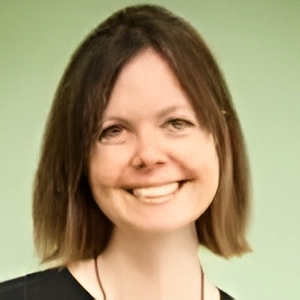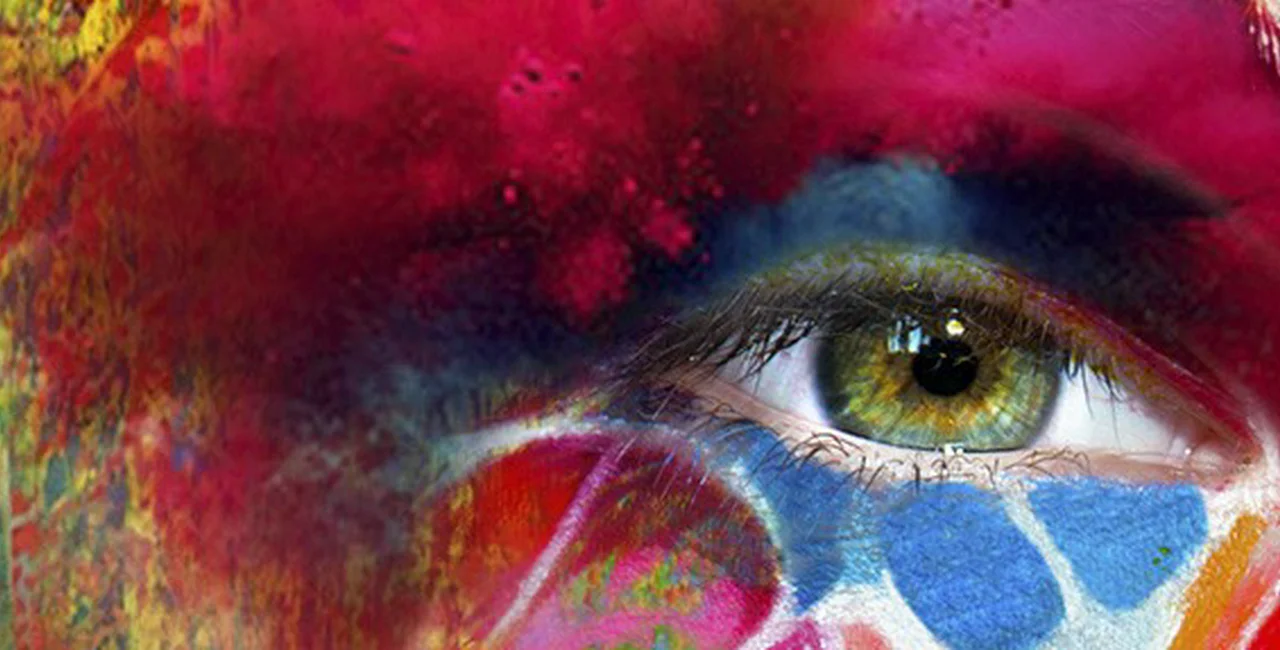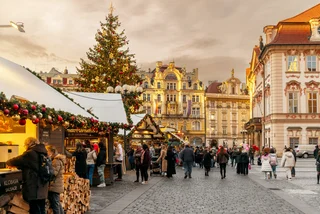Have you seen that big white torso looking thing sitting in front of the Rudolfinum? Or how about the swaying girl in a window on the side of Národní divadlo? These aren´t some guerilla art tactics; but a showcase of outdoor contemporary art in conjunction with the Czech EU presidency.
“Prague is such a wonderful city, but we are missing international contemporary art in public spaces,” says Gisela Winkelhofer, CEO of w.art projects, the exhibition´s organizer. “So we decided, for a special period like the EU Presidency of the Czech Republic, to illuminate these extraordinary squares and facades with unique artists.”
Winkelhofer says the artists were chosen based on the exhibitions theme of “transparency.” She says they looked for light artists who had been working in this medium for a number of years and had lots of experience in the various techniques.
In front of the Rudolfinum, on náměstí Jana Palacha the big white torso is actually a sculpture of a seated man; entitled WE. Done by Spanish artist Jaume Plensa, the five meter tall art piece is stainless steel and weighs 2700 kilograms. The sculpture is made up of different characters from various world alphabets like Russian, Arabic, Hindi and Chinese. Plensa says it was his intention to use the design as a sign of hope for freedom and understanding among all people. Plensa has exhibited his sculptures worldwide and is known for his work in bringing together writing; transparent materials and light. WE will be exhibited until June 30.
Also appearing until June 30 is the dancing girl on the side of Národní divadlo. Ann, Dancing is the contribution of British artist Julian Opie. His art can be described as “a reduction to the essential” which is clearly seen here in the simple form of Ann. Using computer animation, sound and LED screens the scene is slightly voyeuristic as his dancing girl swings and sways in the window. The combination of classic portraits and sculptures, along with modern materials and media can be seen in much of Opie´s work.
German artist Stephan Reusse has set mice loose on the façade of the academy on Dušní near the Spanish synagogue. From 8pm to 1am nightly neon mice appear and disappear before your eyes. No sooner do you think you saw something; than it is gone – only a remembrance. Which is what Reusse was hoping to accomplish with his installation. “Naturally hectic, anxiously hesitant and restless movements characterize this light show, while representing human every day life” is how his work is being described. In actuality a laser is projecting traces of the mice´s movements and their silhouettes onto the wall. Reusse´s goal however, is that they are only drawing on the reminiscent level of our reality in an abstract way. The artist has done many such “art on buildings” exhibitions, including ones in Vancouver and Shanghai. He likes to involve the audience in his art; hopefully by allowing them to put the abstract lines together in a meaningful image for themselves.
As the sun goes down (and until midnight) you will find the word TACET lit up in the Vltava River near the Old Town Bridge Tower and across from the Smetana Museum. Austrian Ulla Rauter took acoustical pauses (tacet is a command; usually in music, to be silent) as her inspiration. This piece serves to make people stop and listen; either to the busy sounds around them; or if they are lucky, the quiet. The illumination is meant to act as a visual command to the pause; forcing the viewer to notice a moment of peace amidst the urban noise levels that are often a constant backdrop to our daily lives.
From April 20 to May 6 American artist Jenny Holzer will use as her canvas the front of the National Museum. Known for her work of projecting text across large monuments; here in Prague Holzer will present extracts from Franz Kafka and poems by Wislawa Szymborska. The effect is produced by running a giant film through a projector equipped with a 6,000-watt lamp. She has illuminated buildings around the world, such as the Jüdisches Museum in Berlin and I.M. Pei´s Pyramide du Louvre in Paris, as well as signed up natural elements like rivers and mountains.
One part of the Transparency project that is no longer appearing is American Arthur Duff´s Love Letters. Shown only for one month; the work projected randomly generated words across Staroměstské náměstí.
So far, Winkelhofer says public feedback on the exhibit has been encouraging.
“(We´ve) only received positive reactions like ‘that is exactly what Prague needs,´ ‘the sculpture WE by Jaume Plensa should stay on nám. Jana Palacha´ and ‘an extraordinary good exhibition,´” she says.
The exhibit was coordinated by w.art projects (www.wartprojects.com) in cooperation with the City of Prague. Winkelhofer says their goal was to make ambitious contemporary art accessible to everyone.
“We have made the conscious decision to bring light art to public areas,” she says. “This will allow the inhabitants of Prague and international visitors to experience the oversized light installations in a dimension never seen before.”
So keep your eyes open when walking the cold and dreary streets of Prague; there may be something out there that to light you up.












 Reading time: 4 minutes
Reading time: 4 minutes 






















